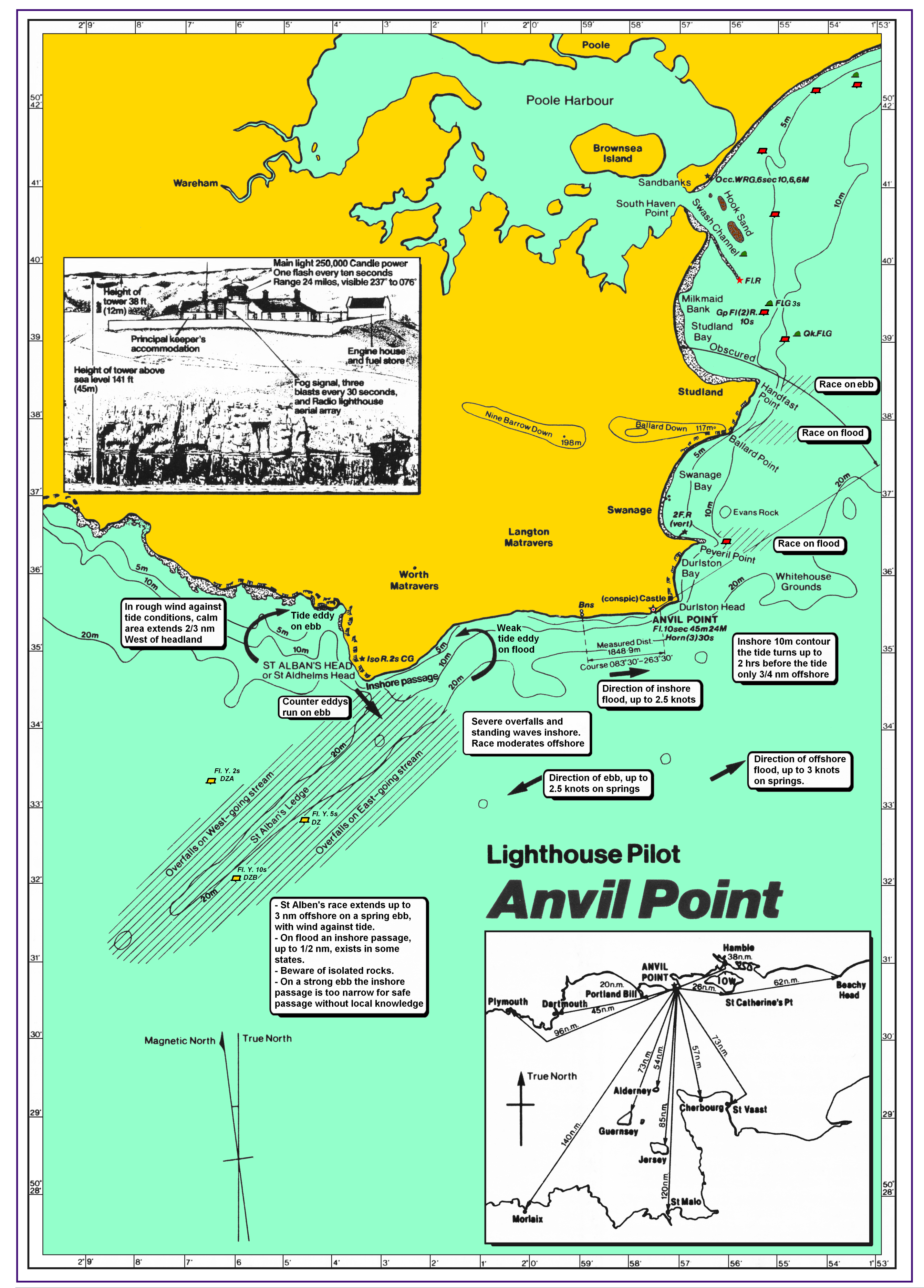POOLE ENTRANCE
Local Low Water is High Water Dover -1:30
The big ebb runs from 3 to 0.5 hr before Local LW
The big flood runs from 0.5 to 3.5 hrs after Local LW
The small ebb runs from 4.5 to 5.5 hrs after Local LW
The small flood runs from 4.5 to 3.5 hrs before Local LW
The small ebb / flood rate are about half of the big ones
Slack slots are:
5 and 3 hrs before Local LW
at Local LW
4 hrs after Local LW
Note: Most tables refer to Poole Quay or Bridge where LW is 0.5 hr later than the Entrance
INSHORE OF ST ALBAN’S RACE
Water
There is deep water on the inshore route and the steep-to head can safely be closed to 30 yards. There are no outlying rocks.
Wind
Sailing Westward with strong breezes from W to N expect to meet a heavy gust on clearing the point. Sailing Eastward with winds from NW to NE, expect squally gusts caused by down-draughts from the cliffs.
With headwinds it is feasible to tack short close inshore, in reasonable sea conditions. In hard weather it is better to avoid the inside passage under sail.
Streams
On the western side of the headland an inshore stream sets SE for a great part of the time. A west going stream flows along the coast of Weymouth Bay which starts about an hour before the turn of the main stream up-Channel.
On the eastern side between Durlston point and St. Alban’s head an eddy sets westerly inshore about an hour and a half before the turn of main stream.
Timing
The point is best rounded at slack water which is at HW Dover if westbound and LW Dover if eastbound.
The race subsides for about ten minutes on either side of these times before reappearing to leeward of the new stream.
It is feasible to pass at reverse times. If passaging westward at LW Dover, once the point has been cleared it is advisable to set a course NW into Weymouth Bay to get out of the flood stream which quickly establishes itself. A reverse passage eastbound is not recommended at springs as the strong ebb will have to be headed wherever bound.
Passage is not ruled out at any time as long as the stream is running favorably, and it can be up to some four knots. However, except at slack water it is unusual to find calm water very close inshore. West going craft will invariably encounter broken water for two or three cables W of the point and should beware the effect of the SE-setting stream. By holding a NW course it will be found that the stream shifts round through SW to W and the vessel will carry through the disturbed water, albeit crabwise.
Eastbound craft should close the shore just S of Chapman’s Pool, remaining close in round the point and for another mile or so when smoother water will be found.
The race on the flood is less pronounced than on the ebb in both extent and intensity, as the effect of the SE setting stream is absent.
St Albans Head
West going starts HW Dover -15mins
East going starts HW Dover +5hr 45mins
Durlston Head
East going starts HW Dover -1hr 15mins
.

